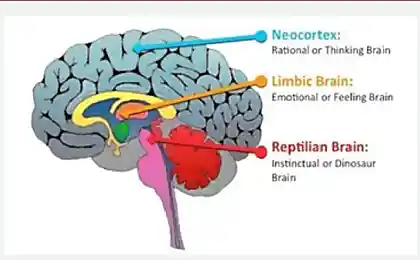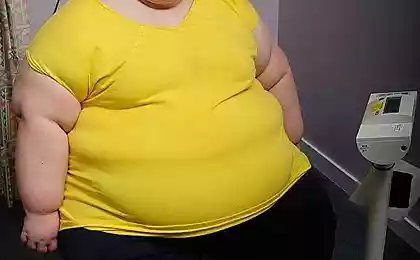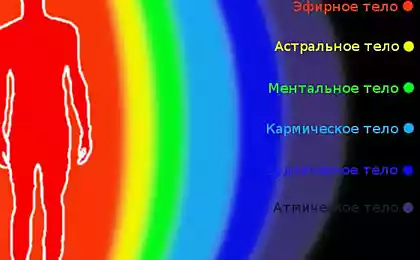297
Dynamic Meditation: The Path to Harmony of Body and Mind

In today’s world, where stress has become a constant companion of life, the search for effective methods of restoring physical and mental balance is becoming increasingly urgent. Dynamic meditation offers a unique approach that combines work with the body, breathing and consciousness, allowing you to quickly release accumulated tension and activate the higher parts of the brain.
What is dynamic meditation and how does it differ from classical meditation?
Classical meditation requires long-term practice and the ability to concentrate in a still state. For a modern person living in a rhythm of constant rush and information overload, this approach is often too complex. Dynamic meditation offers an alternative and more accessible path to deep awareness through active movement.
Unlike static practices, dynamic meditation uses purposeful body movements, intense breathing, and sound vibrations to quickly release tension and activate natural energy flows. This allows even beginner practitioners to quickly experience the effect and achieve altered states of consciousness without years of training.
The scientific basis of dynamic meditation
According to modern neurophysiological studies, intense rhythmic movements in combination with controlled breathing can significantly increase the level of neurotransmitters of happiness - serotonin and dopamine. At the same time, the level of cortisol, a stress hormone, decreases. In addition, the active phase of dynamic meditation increases the blood supply to the brain, especially its upper parts – the neocortex, responsible for higher cognitive functions and emotional regulation.
Research conducted at the University of California has shown that regular practice of dynamic meditation for 8 weeks leads to structural changes in the brain, increasing the density of gray matter in areas responsible for attention, emotional regulation and awareness.
Three key components of dynamic meditation
1. Active breathing
The first and perhaps the most important element of the practice is breathing techniques that perform several functions simultaneously. Deep rhythmic breathing saturates the body with oxygen, activates the vagal nerve (which triggers the relaxation response), and helps displace carbon dioxide from the most distant parts of the lungs. As a result, the level of energy increases, consciousness becomes clearer, and the body begins to get rid of stagnant emotions and energy blocks.
2. Sound vibrations
Using the voice and creating certain sound vibrations is the second most important aspect of the practice. Sound affects the body at the cellular level, creating vibrations that can break energy blocks and release stagnant emotions. Especially effective are low-frequency sounds that create resonance in the chest and abdomen, contributing to the release of suppressed fears, anger and other negative emotions.
3. Expressive movement
The third component is free, unstructured body movement, which allows you to physically express everything that has been suppressed in everyday life. Unlike fitness or dance, there is no proper technique or beautiful form – the movement must be natural, spontaneous and reflective of internal processes. It is through such bodily expression that the most complete release of emotional clamps and return to the natural flow of energy in the body takes place.
Practical Guide: 15-Minute Dynamic Meditation

We offer a simple but effective practice of dynamic meditation that can be done at home and takes only 15 minutes. This is enough time to trigger deep transformations in the body and mind.
Stage 1: Energetic Breathing (3 minutes)
Stand up straight, feet shoulder wide. Start breathing deeply and intensely through the nose, actively moving the diaphragm. Inhalation and exhalation should be equal in duration and follow each other without pause. Imagine how with each breath energy rises from the base of the spine to the top of the head. The hands can be freely lifted up on inhalation and lowered on exhalation, increasing the flow of energy.
Stage 2: Sound vibration (3 minutes)
As you continue to breathe deeply, start adding sound to your exhale. It can be a protracted sound of “Aaaa,” “Woo,” or any other sound that occurs naturally. Don’t hold back the volume – let the sound be strong and deep. Pay attention to the vibrations your voice creates in different parts of your body, especially your chest and abdomen. Feel how sound waves literally wash your internal organs, releasing them from tension.
Stage 3: Spontaneous movement (5 minutes)
Now let your body move spontaneously, following your internal impulses. Don’t think about how you look – let your body express whatever has been suppressed. It can be dancing, jumping, shaking, rocking or any other movement. It is important not to control the process consciously, but to let the body go and let it guide you. The most valuable movements are those that occur involuntarily and may seem strange or unusual – they indicate the release of deep blocks.
Stage 4: Freezing and observation (4 minutes)
Gradually slow down your movements and stop. Stand up or sit still, close your eyes and direct all your attention inside. Observe the sensations in the body, the flow of energy, the state of consciousness. Don’t analyze or evaluate, just be a witness. At this point, the activity of the neocortex naturally increases and consciousness enters a state of meditative clarity. Many practitioners note that it is in this phase that they experience a deep sense of unity, love and gratitude for life.
Benefits of Regular Practice of Dynamic Meditation
The story of Elena, 42, an accountant: After the divorce, I was in a state of constant stress and depression. Traditional meditation seemed too difficult to me, my thoughts were constantly spinning, not allowing me to concentrate. A friend invited me to a dynamic meditation session, and the effect was striking. For the first time in months, I felt a real release - as if a heavy load had fallen off my shoulders. After the first class, I slept like a baby, and in the morning I woke up with a feeling of lightness and joy that I had not experienced in a long time. Now, as I practiced dynamic meditation three times a week, I noticed that not only did my emotional state improve, but my physical health also improved — my chronic headaches disappeared and my blood pressure normalized.
Regular practice of dynamic meditation leads to the following positive changes:
- Relieving stress and emotional tension quickly
- Increased energy tone and vitality
- Improving blood circulation and lymphatic drainage
- Activation of higher parts of the brain (neocortex)
- Increased creativity and intuition
- Natural Harmonization of the Emotional State
- Strengthening the immune system
- Improving sleep quality
- Developing awareness in everyday life
 69
69How to Integrate Dynamic Meditation into Everyday Life
To achieve maximum effect, it is recommended to practice dynamic meditation regularly, at least 3-4 times a week. The ideal time for practice is in the early morning, when the body and mind are not yet loaded with everyday worries, or in the evening, when it is necessary to release the tension accumulated during the day.
Practical advice for beginners:
1. Choose a time when no one disturbs you for at least 20 minutes.
2. Create a comfortable space - remove things that can interfere with free movement, ventilate the room.
3. Wear comfortable clothes that do not restrict movement.
4. You can use music with rhythmic beats for the first three stages and calm, meditative for the final.
5. Don’t judge yourself in practice – let everything happen naturally, without evaluation or control.
6. After practice, drink a glass of water and take a few minutes to calmly monitor your condition.
Remember that each practice is unique and your body may react differently on different days. Sometimes you will feel a powerful burst of energy and euphoria, sometimes a deep calm and peace, and sometimes repressed emotions that require study and integration can surface. All these reactions are natural and part of the process of purification and transformation.
Dynamic Meditation as a Path to Integrity
Dynamic meditation is a powerful tool for self-knowledge and self-transformation, available to everyone regardless of age, physical fitness or previous experience of meditation practices. Unlike many spiritual traditions that require years of discipline and asceticism, this method offers a direct and immediate path to inner freedom and joy through the acceptance of all aspects of one’s being—physical, emotional, mental, and spiritual.
By practicing dynamic meditation regularly, you will not only be able to quickly and effectively relieve the accumulated tension, but also develop a deeper connection with your own body, emotions and consciousness. This practice helps to overcome the separation between mind and body, returning us to a natural state of wholeness and harmony in which life energy flows freely and consciousness remains clear, open and receptive to the beauty of the present moment.
Begin your journey to inner transformation right now and you will be amazed at how quickly and profoundly your perception of yourself and the world can change. Dynamic meditation is not just a practice, it is a lifestyle filled with awareness, joy and love for every aspect of being.
Learn more about dynamic meditation
Glossary of terms
neocortex
The new cerebral cortex, evolutionarily the youngest part of the cerebral cortex. Responsible for higher nervous functions: sensory perception, execution of motor commands, spatial orientation, conscious thinking and speech.
Vagal nerve
The tenth cranial nerve, the main nerve of the parasympathetic nervous system, responsible for relaxing the body after stress. Activation of the vagal nerve reduces heart rate, blood pressure and stress levels.
Energy blocks
In the context of body-oriented practices, areas of chronic tension in the body associated with repressed emotions, traumatic experiences, or stress that interfere with the free flow of energy and vitality.
Mindfulness
A state of consciousness characterized by full presence in the present moment, unassessed observation of internal and external processes without attachment to thoughts, emotions or sensations.
Meditative state
An altered state of consciousness characterized by increased clarity of perception, decreased mental noise, deep relaxation, and specific brain activity in which alpha and theta waves are amplified.
Diaphragmatic breathing
The type of breathing in which the diaphragm is actively involved is the main respiratory muscle located between the chest and abdominal cavities. It contributes to the complete filling of the lungs with oxygen and activation of the parasympathetic nervous system.























